#tomson highway
Text
Queer books?? fuck yeah. Indigenous Queer books for Indigenous Heritage Month??!? even better.
#in case you didn’t know#we exist out on instagram as well#check out our recs from some incredible indigenous authors from across turtle island!#all available to check out or put a hold on from QLL#<3#indigenous heritage month#this town sleeps#dennis e staples#noopiming#leanne betasamosake simpson#green fuse burning#tiffany morris#a broken blade#melissa blair#kiss of the fur queen#tomson highway#magodiz#gabe calderon#ask the brindled#no'u revilla#awasis#louise b halfe#blood#tyler pennock#postcolonial love poem#natalie diaz#disintegrate dissociate#arielle twist#feed#tommy pico
290 notes
·
View notes
Text

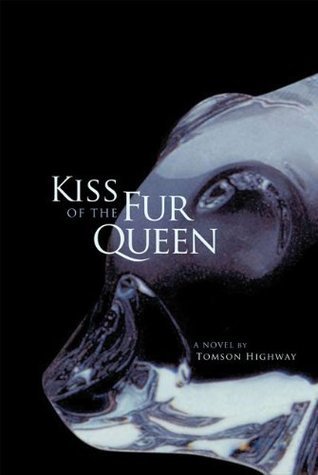

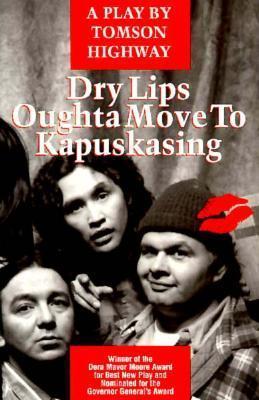
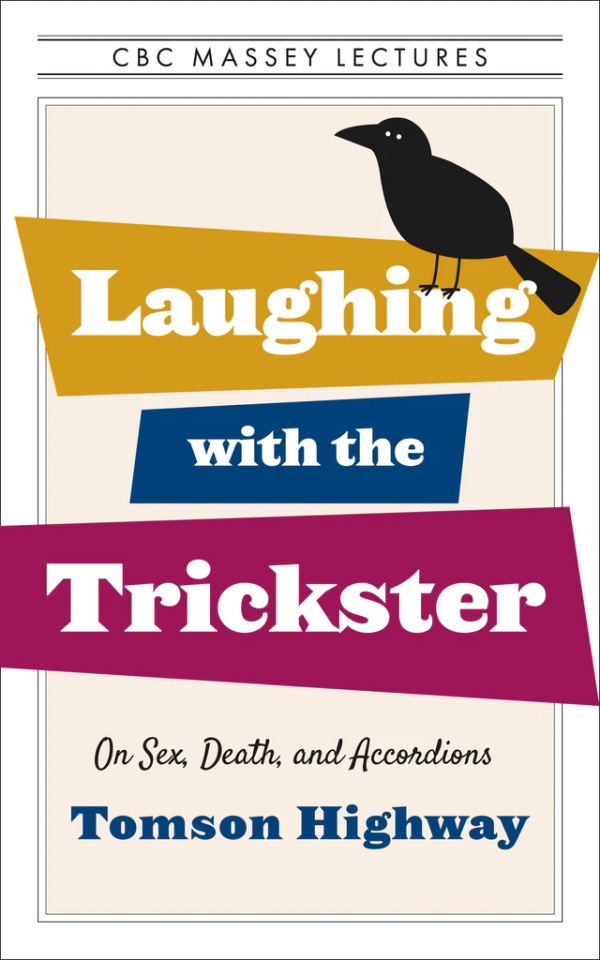


AUTHOR FEATURE:
﹒Tomson Highway﹒
Six Books Written By this Author:
Kiss of the Fur Queen
Permanent Astonishment
Dry Lips Oughta Move To Kapuskasing
Laughing with the Trickster
Rose
The Rez Sisters
___
Happy reading!
#Author Feature#Author Features#books#booklr#bookish#book blog#book blogger#Features#diversify your shelves#Indigenous Authors#Tomson Highway#tbr#to-read#book list#readers of tumblr#read#reading#reader#bookaholic#bibliophile#book addict
6 notes
·
View notes
Text
Gathering: Festival of First Nations Stories June 1-4, 2023, feat. Tom Wilson and Tomson Highway
Gathering: Festival of First Nations Stories returns!This four-day event at Rama and St. Paul’s features internationally celebrated First Nations authors, storytellers, and presenters – June 1-4, 2023Programs are being hosted by the Chippewas of Rama First Nation and St. Paul’s Centre and we are grateful to work collaboratively with the Gojijing Truth and Reconciliation Roundtable, Barrie Area…

View On WordPress
#Canada Arts presentation Fund#Canada Council for the Arts#Chippewas of Rama First Nation#city of Orillia#First Nations#Gathering#Gojijing#Mariposa Folk Festival#orillia#Rama#Seeds of Hope#St. Paul&039;s Centre#Tom Wilson#Tomson Highway
1 note
·
View note
Text
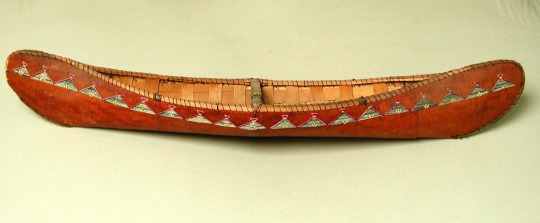
Chapter 11. ‘fucking close to water’: queering the production of the nation by Bruce Erickson (part 2, final)
Land
First ‘canoe’ that European colonists saw were likely Mi’kmaq gwitnn, birchbark boats designed for both ocean and river travel (318)
The colonist’s name is mentioned but the natives in these stories don’t ever get their names so…the colonist realized that to go further inland he would need the gwitn, he needed “the boat derived of the landscape realities of the new world” (Raffan 1999a, 24) (318)
the ‘canoe’ as a symbol unique to Canada (Jennings 1991, 1) (319), reworks essentialized aspects of indigenous cultures into a symbol of national health and success” (319) and as a “gift” from natives to settlers. The canoe as unique entity, because of the exploration done by canoe, the canoe is the guard that maintains the boundary of Canadian identity.
A vague connection could be made to the American symbol of the cowboy to the American west except the canoe is more ‘natural’ for being of the land and from the native people and further substantiated in its uniqueness by its use in colonialism.
Canada as a nation has ‘perfected’ the canoe; the only way the canoe can be made perfect is through its ability to be incorporated into European expansion (320) the connection of the land to the canoe as a discourse of inevitability illustrates the privileging of the European subject as the natural inheritors (indeed, the rightful inheritor) of First Nations land…and implicitly heterosexual and patriarchal subject (320-321)
Possibility
“We cannot possibly anticipate what might happen, if we were really to consider the ten million bodies at the bottom of the Atlantic Ocean "(Shannon Winnubst, 190) (324)

“Rethinking nature that is not bent toward the utility of power” (324) Opening ourselves to the possibilities of history means addressing the ways in which the ideologies and concrete practices that have formed our current understanding of nature represent more about the desired human outcome than they do about anything nonhuman (324)
Similar to really considering 10 million dead bodies in the Atlantic Ocean, this would mean really considering (as a broad list) the malicious wars over land and fur, the forced conversions, the repeated exposure to flu epidemics, the establishment of reservations and classification of First Nations as wards of the state, and the widespread physical and sexual abuse in residential schools designed to assimilate and civilize a supposed “savage” population” (324).

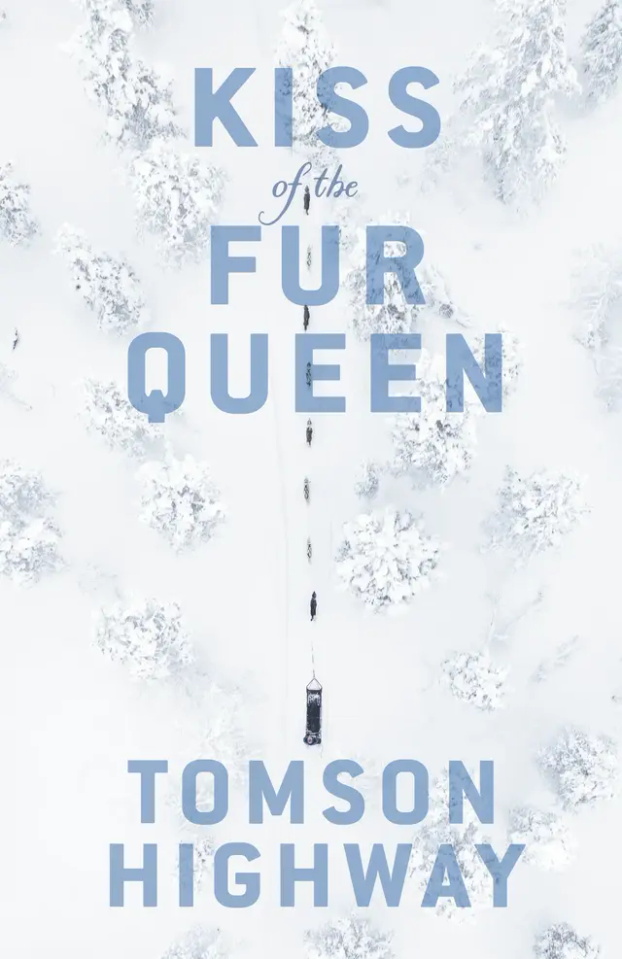
The Kiss of the Fur Queen is a novel by Tomson Highway, Cree playwright and novelist. Two Cree brothers are taken from their parents to a residential school several hundred miles away at the age of six, baptized into the Catholic church and have their names changed, they forbidden to speak their language and are abused by the priests of the school. They are alienated from their parents by the education and sexual predation of the school priests, but also are disconnected from the land, language and culture of their people…(the canoe plays a central role in the story, where difficult conversations about their alienation take place). As they grow up one of the brothers finds “continual inspiration” from the traditional Cree culture and discovered a “need to know the cultures that were suppressed by the residential school”. “As the crowd dances to the migisoo, the eagle, Gabriel realizes its power: ‘Gabriel saw people talking to the sky, the sky replying.” (Highway 1998) (324-326) (this is a poor summary, i apologize.)
“The movement between tradition and innovation is always fluid and uncharted” (327)
“Thus, while as a quirky national joke, the idea of making love in a canoe surely belongs to the post-sexual revolution of the later twentieth century, we need to remember that as a national symbol, the connection it strives to make between the canoe, nature, and nation signals a sexual politic that was born of the age of imperialism. “
“As Foucault reminds us, the legacy of the Victorian repression of sexuality is held within the resistance of the sexual revolution that fails to move outside the biopower networks of modern sexuality.” (327)
#queer ecologies: sex nature politics desire#colonialism#canada#biopower#first nations#foucault#canoes#canoeing#queer ecology#queer theory#environmental politics#heteronormativity#residential schools
3 notes
·
View notes
Note
hi, hello! first off, you're always so much help and the first place i go when i need fc help or just wanna look at new faces. currently, i'm looking to add some age diversity to my potential fc lineup so i was wondering if you had any favorite faces that could portray 50+?
Non-binary - no resources at time of posting!
John Cameron Mitchell (1963) - non-binary.
Justin Vivian Bond (1963) - non-binary - they/them/she.
Two-Spirit - resources at time of posting:
Tomson Highway (1951) Cree - he/him - two-spirit.
Storme Webber (1959) Aleut, Choctaw, African-American, Unspecified White - she/they - two-spirit.
Alec Butler (1959) Métis of Mi'kmaq - two-spirit intersex trans man.
Women - resources at time of posting:
Judi Dench (1934)
Lily Tomlin (1939) - lesbian.
Helen Mirren (1945)
Tyne Daly (1946)
Tantoo Cardinal (1950) Metis of Cree, Dene, Nakoda Sioux, and French.
Sheri Foster (1957) Cherokee.
Angela Bassett (1958) African-American.
Michelle Yeoh (1962) Malaysian Chinese of Hokkien and Cantonese descent.
Ming-Na Wen (1963) Macanese.
Jeanne Tripplehorn (1963)
Marisa Tomei (1964)
Viola Davis (1965) African-American.
Michelle Gomez (1966)
Michael Michele (1966) African-American / European.
Miranda Otto (1967)
Laura Dern (1967)
Melora Hardin (1967)
Jeri Ryan (1968)
Gina Torres (1969) Afro-Cuban.
Neslihan Yeldan (1969) Turkish.
Mädchen Amick (1970)
Octavia Spencer (1970) African-American.
Lee Byung Hun (1970) Korean.
Men - resources at time of posting:
Tobin Bell (1942)
Joe Mantegna (1947)
Wes Studi (1947) Cherokee.
Steven Williams (1949) African-American.
Jonathan Banks (1949)
Gil Birmingham (1953) Comanche.
Mark Boone Junior (1955)
Ernie Dingo (1956) Yamatji.
David Alan Grier (1956) African-American.
Hiroyuki Sanada (1960) Japanese.
Christopher Meloni (1961)
Emilio Rivera (1961) Mexican.
Grant Show (1962)
Kamel El Basha (1962) Palestinian.
Mat Fraser (1962) - has thalidomide-induced phocomelia.
Hiro Kanagawa (1963) Japanese.
Dermot Mulroney (1963)
Benjamin Bratt (1963) German, English, Sudeten German / Quechua Peruvian.
Paterson Joseph (1964) Saint Lucian.
Keanu Reeves (1964) Kānaka Maoli, Portuguese, English, Scottish, at least 1/16th Chinese, remote Dutch / English.
Kadeem Hardison (1965) African-American.
Jeffrey Wright (1965) African-American.
Zahn McClarnon (1966) Hunkpapa Lakota Sioux and Irish.
Michael Greyeyes (1967) Plains Cree.
Ian Harvie (1968) - trans.
Ken Watanabe (1969) Japanese.
Aaron Pedersen (1970) Arrernte and Arabana.
Let me know if you want suggestions without resources too!
7 notes
·
View notes
Text
knowing a bunch of artists and writers can be so weird. Tomson Highway just came up as a FB friend suggestion ("1 mutual friend")
1 note
·
View note
Text

Kiss of the Fur Queen is a novel by Tomson Highway, first published by Doubleday Canada in September 1998. The novel’s main characters are Champion and Ooneemeetoo Okimasis, two young Cree brothers from Eemanipiteepitat in northern Manitoba who are taken from their families and sent to a residential school.
Kiss of the Fur Queen - Tomson Highway | 807 Books and Novelties
0 notes
Text
• You don't sit down to write a masterpiece. You don't sit down to write a hit; that's the last thing on your mind. You do it just to clean up your mind. It's like housekeeping for your soul or your spirit. —Tomson Highway

CBC
CBC (at Internet Archive)

0 notes
Text
“Unveiling the Transition: Why Carrie Underwood Stepped into Faith Hill’s Spotlight” | Tomson Highway
0 notes
Text
Native American Theatergruppe ist bereit, ihren Fussabdruck zu hinterlassen

Theaterstücke der berühmten Joy Harjo und anderer indigener Schriftstellerinnen und Schriftsteller
Two Worlds ist ein indigenes Theaterensemble, das sich dem Erzählen von Geschichten aus dem eigenen Lebenskreis durch darstellende Kunst verschrieben hat.
Die künstlerische Leiterin Kim Gleason sagte, dass es beim Eröffnungsfestival in erster Linie darum geht, dass die Ureinwohner ihre eigene Identität zurückgewinnen, indem sie sich in den Stücken als Schauspieler/innen aus der Perspektive der Ureinwohner darstellen und Themen aufgreifen, die die Ureinwohner heute betreffen.
"Wir wollen sicherstellen, dass wir verstehen, dass Ressourcen wichtig sind, wenn es um das Wasser und das Land in New Mexico geht", sagte Gleason. "Und wir wollen berücksichtigen, dass die Umwelt für unsere indigene Truppe in Zukunft sehr wichtig ist. Denn darstellende Kunst ist für uns eine heilende Zeremonie."
Das Festival beginnt und endet mit einem Empfangsgebet, Lesungen, Podiumsdiskussionen und Theateraufführungen im Experimental Theatre der University of New Mexico und im Vortex Theatre.
Auf dem Festival werden drei Stücke uraufgeführt: "Wings of Night Sky, Wings of Morning Light" von Joy Harjo (Muscogee), "The Rez Sisters" unter der Regie von Tomson Highway (Cree) und "Dancing with Fire" von Gleason (Diné).
Gleason sagt, dass es für die Künstler/innen wichtig ist, Feedback aus der Gemeinde zu bekommen.
"Wenn wir ein Programm zusammenstellen, stellen wir Fragen wie: 'Was können wir als Nächstes tun? Was haben wir gemacht, was unsere Gemeinde noch nicht gesehen hat? Und was würde das Publikum gerne sehen?'"
Gleason wird ihr selbstgeschriebenes Stück "Dance With Fire" vorführen, das sie 2015 geschrieben hat und das in den 1970er Jahren spielt.
"Es geht um eine Navajo-Familie, die in einem Reservat lebt und die Vietnam-Ära miterlebt. Was es bedeutet, eingezogen zu werden und wie es war, in dieser Zeit zu leben", sagte sie.
Gleason sagte, ihre Inspiration für das Stück kam aus dem Leben ihrer Mutter.
"Es war wie ein feierlicher Moment, weil ich die matriarchalische Tapferkeit teilen wollte, die sie überwinden musste, um die Person zu sein, die sie zu ihrer Zeit war. Und sie war für mich und meine Familie eine sehr gute Mutterfigur".
Eine weitere prominente Figur für das Festival ist Lori Tapahonso, eine Diné/Acoma-Schauspielerin, die derzeit als Präsidentin des Verwaltungsrats von Two Worlds fungiert.
Tapahonso sagt, dass die Forderung nach einem indigenen Theaterfestival immer lauter wird und hofft, dass es sich zu einem National Performing Arts Center for Native Americans in Albuquerque entwickelt.
"Die Möglichkeit, dies zu schaffen und zu verwirklichen, hat sich gerade erst ergeben, und es war ein Glücksfall, dass es passiert ist", sagte Tapahonso.
Sie sagt, dass diese indigene Theatertruppe eine Vorreiterrolle einnehmen kann, indem sie Wege beschreitet, die es bisher noch nicht gab.
"Und anderen im Mainstream-Theater helfen, zu verstehen, wie unglaublich und einzigartig das indigene Theater ist", sagt sie. "Es ist etwas, das wir noch nicht oft gesehen haben, aber wir hoffen, dass wir noch viel mehr davon sehen werden.
Tapahonso half beim Aufbau indigener Theatergruppen in Oregon und New York. Sie sagt, dass die Dynamik für den Aufbau starker und reichhaltiger Wege für die Stimmen und die Kreativität der Ureinwohner da ist und dass es sich um einen ungenutzten Markt handelt.
"Wir sind Geschichtenerzähler. Es ist Teil unserer DNA, Geschichten zu erzählen und kreativ zu denken. Daher ist es genau das, was Two Worlds mitgestalten möchte", sagt sie.
Tapahonso ist eine der sieben Schauspielerinnen, die in "Rez Sister" mitspielen, einem Stück über eine Gruppe von Frauen, die davon träumt, "das größte Bingo der Welt" zu gewinnen. Um das zu erreichen, müssen sie ihr Reservat auf Manitoulin Island verlassen und in die große Stadt Toronto ziehen.
"Es ist schon eine Weile her, dass ich in einer richtigen Produktion mitgespielt habe", sagt Tapahonso. "Es ist heilsam und schön für uns als Schauspieler, hierher zu kommen und Worte auf ein Blatt zu bringen. Es ist einfach schön zu sehen, wie sich die Geschichte in eine wunderschöne visuelle und emotionale Erfahrung verwandelt."
Sie sagt, es sei auch ein Vorteil zu sehen, wie das Publikum auf die Aufführung reagiert.
"Es ist toll, weil sich das indigene Theater so sehr von jeder anderen Art von Theatererfahrung unterscheidet", sagt sie.
Tapahonso sagte, dass indigene Schauspieler/innen "übersehen werden, weil sie nicht in eine bestimmte Form passen, in eine bestimmte visuelle Darstellung, die gewünscht wird", wenn sie für Fernseh-, Film- oder Theaterstücke vorsprechen.
Zusätzlich zu seiner Arbeit mit Two Worlds wurde Gleason von der University of New Mexico engagiert, um einen neuen, einzigartigen Kurs im Theaterprogramm zu unterrichten: "Native American Storytelling in Drama".
Als ehemalige Studentin der Theaterabteilung der UNM sagte Gleason, sie fühle sich geehrt, die erste indigene Lehrkraft zu sein, die eine Theaterklasse über indigenes Geschichtenerzählen unterrichtet.
"Ich bin eine der Ersten, die das indigene Geschichtenerzählen vermitteln kann, und die Schüler/innen sind begeistert", sagt sie. "Sie lernen viel über die Produktionsseite des indigenen Theaters und darüber, was es braucht, um Theaterproduktionen aus der Sicht der Ureinwohner zu präsentieren.
Gleason sagt, dass es um mehr geht, wenn es darum geht, indigene Geschichten zu erzählen.
"Wir müssen verstehen, dass das Erzählen unserer Geschichten durch ehrlichen und kreativen Ausdruck eine Menge Balance zwischen zwei Welten erfordert", sagt sie. Wir müssen sicherstellen, dass wir unsere Geschichten sorgfältig schützen, die Grenzen zu unseren Ältesten nicht überschreiten und nicht zu viel mit der Öffentlichkeit teilen."
Sie sagt, dass manche Geschichten in Räumen aufbewahrt werden müssen, die nicht für die Öffentlichkeit bestimmt sind. Das heißt aber nicht, dass die amerikanischen Ureinwohner/innen nicht versuchen, der Mainstream-Kultur ein positives Bild der Ureinwohner/innen zu vermitteln.
Gleason sagte, dass eines der wiederkehrenden Themen in ihrer Klasse die Idee der Identität der amerikanischen Ureinwohner ist. Sie sagte, dass nicht-einheimische Menschen in der darstellenden Kunst dazu neigen, nicht-einheimische Schauspieler/innen in Rollen zu besetzen, die speziell für indigene Schauspieler/innen geschaffen wurden.
Um dies zu verhindern, sagte Gleason: "Wir müssen uns für die darstellenden Künste einsetzen, besonders für das Geschichtenerzählen der Ureinwohner. Wir müssen etwas für unser Volk und von unserem Volk machen. Einheimische Autoren, einheimische Regisseure, einheimische Schauspieler und sogar einheimische Schauspielerinnen bis hin zur Bühnencrew sind wichtig, um richtig vertreten zu sein."
"Wir haben unsere eigene Stimme und brauchen keine Stimmen von außen, die uns sagen, was wir tun müssen, um ein indigenes Unternehmen zu führen. Wenn es um Entscheidungen geht, sollten diese aus indigener Sicht getroffen werden", sagte sie.
Quelle: Source NM
Read the full article
0 notes
Text
https://www.cbc.ca/radiointeractives/ideas/cbc-massey-lectures-tomson-highway
"...the acclaimed Cree playwright and author explores some of the fundamental questions of human existence through the lens of Indigenous mythologies, and contrasts them with the ideas from ancient Greece and Christianity."
0 notes
Text
Tomson Highway will explore life through laughter at the 2022 CBC Massey Conferences
Tomson Highway will explore life through laughter at the 2022 CBC Massey Conferences
Cree artist Tomson Highway will bring this year’s CBC Massey Lectures to audiences across Canada in the series’ first live event since 2019.
In his 2022 CBC Massey Lectures, titled Laughing with the Trickster: On Sex, Death, and AccordionsHighway brings its signature irreverence to an exploration of five central themes of the human condition: language, creation, sex and gender, humor and…
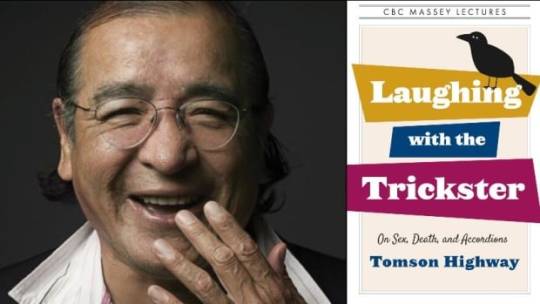
View On WordPress
0 notes
Text
Product
Nous sommes des histoires
Réflexions sur la littérature autochtone
Anthologie dirigée par
Marie-Hélène Jeannotte, Jonathan Lamy et Isabelle St-Amand
Avec des textes de
Jeannette Armstrong, Thomas King, Lee Maracle, Gerald Vizenor, Drew Hayden Taylor, Sherman Alexie, Neal McLeod, Daniel Heath Justice, Renate Eigenbrod, Sam McKegney, Tomson Highway, Jo-Ann Episkenew, Emma LaRocque, Keavy Martin et…

View On WordPress
1 note
·
View note
Photo

Tomson Highway
Gender: Two spirit (he/him)
Sexuality: Gay
DOB: 6 December 1951
Ethnicity: First Nation (Cree)
Occupation: Playwright, writer, screenwriter
#Tomson Highway#qpoc#lgbtq#lgbt+#lgbt poc#two spirit#third gender#gay#1951#native#first nation#cree#playwright#screenwriter#writer#popular#popular post
176 notes
·
View notes
Text
Wars start when two parties haven't taken the time to learn each other's tongues.
Tomson Highway, Kiss of the Fur Queen
#Tomson Highway#Kiss of the Fur Queen#Orange Shirt Day#reconciliation#understanding#language#language quotes#Indigenous literature#Canadian literature#quotes#quotes blog#literary quotes#literature quotes#literature
14 notes
·
View notes
Text
Tomson Highway
Highway first gained acclaim for his 1986 play The Rez Sisters, which revolves around seven women in a fictional community on Manitoulin Island. Originally written in Cree, this version was later released in 2010 along with the original Cree version of his next play, Dry Lips Oughta Move to Kapuskasing. Tomson Highway has not only written plays, he has written a number of children’s books, two Cree libretti, and one novel, titled Kiss of the Fur Queen, which is a fictionalized account of Highway and his brother’s own childhoods about the lives of two brothers during and after their time in a residential school, addressing the abuse they faced as well as how the brothers grew and came to terms with their identities.
Tomson Highway is a famed playwright and novelist, lauded for his portrayals of the highs and lows of life as an Indigenous person in Canada. He is credited with being a pivotal early player in the First Nations literary movement following the success of his early works. A twospirited Cree, Highway grew up in Northern Manitoba, the second youngest child in a family of caribou hunters. Touching upon many issues he and other Indigenous people have faced, Highway’s works take much from both his own experiences a twospirited Cree who grew up in a residential school and the experiences of others that he knew in a variety of contexts and worked with in his early career as a social worker on a number of reserves.
Sources:
Highway, Tomson. “Biography.” Tomson Highway. http://www.tomsonhighway.com/biography.html .
“Tomson Highway releases plays in Cree.” CBC News, 2010. https://www.cbc.ca/news/canada/ottawa/tomson-highway-releases-plays-in-cree-1.895683?ref=rss .
Skallerup, Lee. “Tomson Highway.” Athabasca University, 2015. http://canadian-writers.athabascau.ca/english/writers/thighway/thighway.php .
#tomson highway#two spirit#indigenous#indigenous literature#two spirit literature#books#first nations#indigiqueer#queer literature
1 note
·
View note